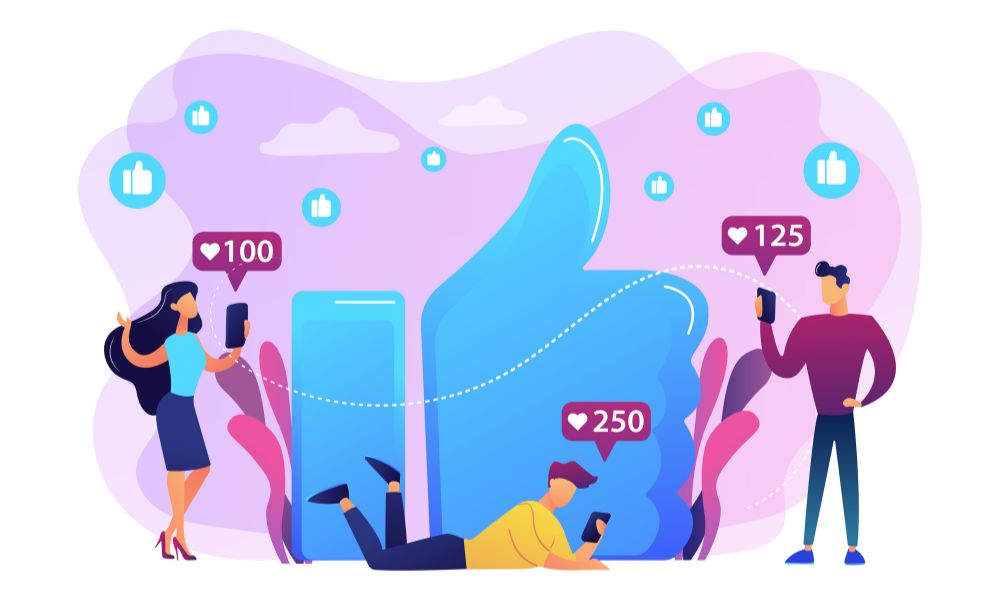
A brand invests thousands into influencer campaigns, posts start rolling in, and the engagement numbers look great. Likes, comments, and shares pile up. But when the dust settles, a familiar question hangs in the air: Did any of this actually drive sales?
That’s the puzzle of influencer attribution. It’s not enough to know people enjoyed a post, marketers need to connect the dots between an influencer’s content and the actions that matter, like purchases, sign-ups, or app downloads. Without attribution, budgets feel like a gamble. With it, influencer marketing becomes a measurable growth channel.
The challenge is that attribution isn’t simple. Customers see multiple posts across platforms, some share links privately, others walk into stores after seeing a Reel weeks earlier. Tracking these paths requires both strategy and the right tools.
What follows is a framework you can use to understand influencer attribution, apply the right tracking methods, and finally show which creators drive measurable results.
What Is Influencer Attribution? (And Why It’s a Marketer’s Best Friend)
Influencer attribution is the process of connecting a desired action, like a sale, a sign-up, or an app download, back to the influencer or piece of content that inspired it. Instead of stopping at surface-level metrics such as likes or comments, attribution digs deeper to answer the question every marketer has: Which creators are actually driving business outcomes?
Attribution matters because it transforms influencer marketing from a “nice to have” into a measurable channel. When you can tie revenue to a specific post or creator, you’re not just running campaigns, you’re building a growth engine.
Why It Matters Now More Than Ever?
The influencer space is more crowded than ever. With millions of creators across Instagram, TikTok, YouTube, and beyond, brands can’t afford to guess which partnerships deliver real ROI. At the same time, marketing budgets are under constant scrutiny. CFOs and CMOs want hard numbers, not vanity metrics.
This is where attribution earns its place as a marketer’s best friend. It provides the proof that influencer campaigns deserve more investment, while also showing which creators to double down on and which to cut.
Influencer Attribution vs Standard Marketing Attribution
Traditional marketing attribution looks at broad channels: paid search, email, display ads, or organic traffic. Influencer attribution zooms in on individual creators and even specific posts. The difference is in the level of granularity: instead of saying “Instagram drove 1,000 conversions,” attribution can tell you “this TikTok by Creator X drove 200 sign-ups, while that Instagram Story by Creator Y drove 50 purchases.”
That level of detail helps marketers make smarter choices about where to allocate budget and which creator relationships to prioritize.
The Influencer Attribution Problem: Why It’s So Hard to Track
Attribution sounds straightforward on paper, but in practice, it’s one of the toughest challenges in influencer marketing. The reason is simple: the customer journey is rarely linear. People don’t just see one post, click, and buy. They move across platforms, talk to friends, save posts for later, and sometimes make the final purchase weeks down the line. That complexity makes tracking messy.
The Multi-Touch Customer Journey
Most buyers interact with multiple influencers, ads, and brand touchpoints before making a decision. One post might spark awareness, another might answer a question, and a third might give the final nudge to purchase. The challenge is deciding who deserves the credit, the creator who first sparked interest, the one who educated, or the one who closed the deal.
Walled Gardens of Social Platforms
Platforms like Instagram and TikTok are built as closed ecosystems. They provide surface-level analytics such as reach, impressions, or clicks, but rarely give full visibility into how those actions tie to conversions off-platform. That means brands often rely on limited data, making it hard to build a complete picture.
The Rise of Dark Social
Not every share is public. A huge portion of influence happens in private channels like DMs, group chats, or messaging apps. A TikTok might be copied into WhatsApp, or an Instagram Story might be screenshotted and texted. These interactions can spark real purchases, but they leave no obvious digital trail for attribution tools to follow.
Offline Conversions
Influence doesn’t stop online. Sometimes a customer sees a post, remembers it later, and buys in a physical store. An influencer might inspire someone to try a product during their next shopping trip, but unless you’re running a survey or coupon redemption program, that sale won’t be tracked back to the creator.
All of these factors combine to make influencer attribution one of the most debated and evolving parts of marketing. It’s not impossible, but it requires the right methods and realistic expectations about what can and can’t be measured.
Influencer Attribution Models Explained
Once you understand why attribution is tricky, the next step is choosing a model for how you’ll assign credit. Different models highlight different parts of the customer journey, and no single one is “perfect.” The key is matching the model to your campaign goals.
I) First-Click Attribution: Crediting Discovery
In this model, the first influencer who introduces someone to your brand gets all the credit. It’s useful when your main goal is awareness or discoverability. The limitation is that it undervalues the later influencers who nurtured trust and pushed the final decision.
II) Last-Click Attribution: Crediting the Final Nudge
Here, the last influencer interaction before the conversion gets 100% of the credit. It’s the simplest model to set up and is often the default for affiliate codes and trackable links. The trade-off is that it ignores the role of earlier creators who may have sparked the initial interest.
III) Multi-Touch Attribution: Spreading Credit Across Interactions
Multi-touch models divide credit among all the influencer touchpoints in a buyer’s journey. For example, 40% might go to the first click, 40% to the last, and 20% spread across the middle. This gives a more accurate picture but requires more data and a consistent tracking setup.
IV) Data-Driven Models: Machine Learning Assigning Value
Some advanced platforms use machine learning to analyze large sets of customer journeys and automatically assign weight to each touchpoint. These data-driven models can reveal patterns you’d miss manually, but they’re complex to implement and often require specialized tools.
V) Recommendation: Start Simple, Then Evolve
For most brands, starting with last-click attribution makes sense because it’s easy to track and explain. As your influencer program matures, moving toward hybrid or multi-touch models will give you a truer sense of impact. The important part is not to stick with one model forever but to evolve as your data and budget grow.

The Influencer Attribution Toolkit: 5 Practical Methods
To move from theory to action, you need tools that turn influencer performance into measurable data. The good news: you don’t need to reinvent the wheel. A few tried-and-true methods can help you track clicks, conversions, and revenue directly back to the creators you work with.
1. UTM Parameters: The Digital Breadcrumb Trail
Think of UTM parameters as little tags you add to a link. When an influencer shares that link, the tags travel with it and tell your analytics platform where the click came from. This creates a “breadcrumb trail” from a social post to your website activity.
How do They Work?
A normal link might look like this:
https://brand.com
With UTMs added, it becomes:
https://brand.com/utm_source=instagram&utm_medium=influencer&utm_campaign=spring_launch&utm_content=creatorname
Every time someone clicks, GA4 records not just the visit, but the exact campaign, platform, and influencer that drove it.
How to Track in GA4?
- Go to Reports → Acquisition → Traffic Acquisition.
- Filter by Session source/medium (e.g., instagram / influencer).
- Use the Session campaign or Content parameter to see which creator link brought traffic and conversions.
Mini UTM Template (Copy-Paste Friendly):
| Parameter | Example Value | What It Tracks |
| utm_source | Platform (Instagram, TikTok, YouTube) | |
| utm_medium | influencer | Type of channel (influencer, paid, organic) |
| utm_campaign | spring_launch | Campaign name (promotion, product line) |
| utm_content | creatorname | Specific influencer or piece of content |
Pro Tip: Give each influencer a unique utm_content value so you can compare their performance side by side.
2. Affiliate Links & Discount Codes: The Tried-and-True Workhorses
When brands want a simple, direct way to tie sales back to influencers, affiliate links and discount codes are often the first tools they reach for. They’re easy to set up, easy to explain to creators, and they give you a clear “last click” picture of who drove the purchase.
Affiliate Links:
These are unique URLs given to each influencer. When someone clicks and buys, the sale is recorded and credited back to that influencer.
Pros:
- More precise than discount codes (tracks the actual click and conversion).
- Can be tied to commissions, motivating influencers to keep promoting.
- Works across multiple content types: posts, bios, swipe-ups, or link-in-bio tools.
Cons:
- If a customer sees the content but later Googles your site instead of clicking the link, the influencer doesn’t get credit.
- Some platforms limit where links can be placed (e.g., TikTok captions).
Discount Codes:
Codes like CREATOR20 are entered by the buyer at checkout, giving them a discount while attributing the sale to the influencer.
Pros:
- Simple and easy to remember.
- Great for spoken content (podcasts, YouTube videos).
- Adds urgency when paired with limited-time offers.
Cons:
- Can be shared widely on coupon sites, inflating results.
- Doesn’t track people who clicked but didn’t use the code.
How to Set Up a Simple Affiliate Program?
- Pick a platform (Shopify Collabs, Impact, Refersion, or even a simple Google Sheet + PayPal payout system for small programs).
- Assign each influencer both a unique affiliate link and a discount code. This way, you catch more sales, no matter how the buyer comes in.
- Decide on structure: flat-fee payments, commission percentage, or a hybrid model.
- Track regularly – look at total revenue driven, not just clicks, to see true ROI.
Pro Tip: Use both links and codes. Links give precision, while codes give influencers something tangible to promote. Together, they cover more of the buyer journey.
3. Influencer Marketing Platforms: The Centralized Solution
When campaigns grow beyond a handful of creators, spreadsheets and manual tracking quickly fall apart. That’s where influencer marketing platforms come in, they act as the control center for discovery, campaign management, and attribution in one place.
Instead of juggling UTM links in one tool, discount codes in another, and screenshots of analytics in a shared folder, platforms centralize everything. You get a single source of truth that shows exactly which influencer drove what action, across multiple campaigns.
How Platforms Handle Attribution?
- Automatic tracking: Platforms like Hypefy connect directly with influencer content, logging clicks, conversions, and engagement.
- Content-to-performance mapping: See not just who drove sales, but which type of content performed best, was it an Instagram Reel, a TikTok tutorial, or a long-form YouTube review?
- Cross-funnel visibility: Platforms don’t just track last-click sales. They also give insights into assisted conversions, reach, and brand lift to capture the full impact of influencers across the funnel.
Why This Matters?
- Saves time and reduces errors from manual reporting.
- Makes it easier to compare creators fairly, since everyone is measured with the same metrics.
- Provides clean data for budget justification, so you can scale what works.
Pro Tip: Use a platform not only for attribution but also for campaign planning. With tools like Hypefy, you can handle discovery, influencer outreach, campaign tracking, and reporting in one system, no more scattered tools and incomplete data.
4. Trackable Links & Landing Pages: The Sophisticated Approach
Sometimes attribution needs to go beyond codes and generic affiliate links. That’s where trackable links and custom landing pages step in. By creating a unique digital doorway for each influencer, you can clearly see which audience entered your brand’s ecosystem from where.
How It Works?
- Create custom URLs like brand.com/influencer-name or brand.com/campaign2025.
- Connect them to analytics tools so every click, visit, and conversion is tied back to a specific influencer.
- Layer in shortened links (Bitly, Rebrandly) for cleaner sharing across platforms.
Why It’s Powerful?
- Personalized experience: Followers feel like they’re getting a direct introduction from the influencer.
- Cleaner data: Easy separation of traffic sources without overcomplicating with multiple UTMs.
- Scalable for micro campaigns: Works particularly well for nano and micro-influencers, where codes may feel forced but unique landing pages make the connection seamless.
Best Practices:
- Keep the influencer’s name in the link for clarity.
- Ensure landing pages carry the influencer’s voice or branding touch for consistency.
- Always connect back to your funnel, don’t just capture clicks, track conversions too.
Pro Tip: Pair custom landing pages with retargeting campaigns. Even if visitors don’t convert on the first visit, you can re-engage them later with tailored ads.
5. Brand Lift Studies: Measuring the Intangible
Not every campaign is about driving immediate sales. Sometimes the goal is shaping perception, boosting awareness, or shifting sentiment. That’s where brand lift studies come into play.
What do They Measure?
- Awareness: Do more people know your brand after seeing the campaign?
- Consideration: Are people more likely to think of you as an option?
- Favorability & sentiment: Did the influencer campaign make audiences feel more positive about your brand?
- Purchase intent: Are viewers more likely to say they’d buy in the future?
How It Works?
Platforms like YouTube and TikTok offer built-in brand lift survey tools. They compare exposed audiences (those who saw your campaign) with control groups (those who didn’t) to measure changes in recall, sentiment, or intent.
Why It Matters?
- Goes beyond clicks and conversions to capture the real impact of influencer storytelling.
- Justifies the value of top-of-funnel and awareness-driven campaigns where direct sales may not show up right away.
- Helps balance performance metrics with long-term brand equity.
Pro Tip: Pair brand lift studies with your attribution setup. Use UTMs and codes for hard data, and lift surveys for soft impact. Together, they give you a 360° view of your campaign’s effectiveness.

How to Build Your Influencer Attribution Framework: A 5-Step Plan
Attribution isn’t just about tools, it’s about building a system that turns influencer activity into measurable outcomes. Think of it as creating a playbook where every campaign has clear rules, trackable signals, and a path from content to ROI.
Step 1: Define Your Campaign Goal & KPI
Before you set up links or hand out discount codes, you need to know exactly what success looks like. The goal determines the attribution method you’ll use and the KPIs you’ll measure.
- Sales-focused campaigns: Track conversions, revenue, and ROAS.
- Lead generation campaigns: Focus on form submissions, downloads, or sign-ups.
- Awareness campaigns: Use reach, impressions, or brand lift surveys as the benchmark.
- Engagement campaigns: Measure saves, shares, and comment depth rather than just likes.
Pro Tip: Don’t chase every metric at once. Pick one north-star KPI per campaign so your attribution stays clean and actionable.
Step 2: Select Your Primary Attribution Method
Once you’ve set your campaign goal, the next move is to choose how you’ll connect influencer activity to results. The method you select needs to align with the type of outcome you’re tracking.
- UTM Parameters work best when driving traffic to your website. They give you visibility in Google Analytics and help break down performance by influencer or even specific posts.
- Affiliate Links are ideal for revenue-focused campaigns. They provide last-click accuracy and can be tied directly to commissions.
- Discount Codes are simple and audience-friendly, especially for conversions on mobile or in-store purchases.
- Custom Landing Pages give you full control over attribution and messaging, perfect for micro and nano influencer campaigns.
Most brands don’t stick to one method. A common setup is UTMs + discount codes, which lets you track both the digital journey and the final purchase action.
Pro Tip: Start simple. Layer on more sophisticated attribution tools once you’ve validated the basics.
Step 3: Equip Influencers with the Right Tools
Even the best attribution plan fails if influencers don’t have the resources to make tracking possible. Your job is to make it easy for them to succeed. That means giving each creator the tools they need to connect their content to measurable outcomes.
- Unique links: Assign each influencer a personalized UTM or affiliate link. This keeps performance clean and avoids overlap in your reporting.
- Discount codes: Provide short, memorable codes (like LARA20 instead of a long string). They’re easier for audiences to recall and use, especially in Stories or Reels.
- Custom landing pages: If you want more polished tracking, create influencer-branded pages (e.g., brand.com/jessica). It makes the campaign feel exclusive while also ensuring attribution.
- Clear briefs: Explain why you need them to use these tools. Influencers are more likely to cooperate when they see that attribution proves their value and secures long-term partnerships.
Think of it this way: tools are not just for you, they are also for the influencer. When they can show exactly how many sales, sign-ups, or downloads they drove, it strengthens their case for future collaborations and higher pay.
Step 4: Centralize Your Data in a Single Dashboard
Attribution falls apart when your data lives in ten different places. One influencer sends you screenshots from Instagram Insights, another shares an affiliate report, while your ads team tracks UTMs in GA4. Without a single view, it’s nearly impossible to see the real impact of your campaigns.
The fix is to centralize your reporting into one dashboard. This could be as simple as a Google Sheet connected to Looker Studio or as advanced as using an influencer marketing platform like Hypefy. The key is that every click, code redemption, and conversion flows into one place.
Centralization gives you three advantages:
- Clarity: You immediately see which creators drive results at which stage of the funnel.
- Comparability: Performance is measured by the same metrics, making it easier to spot top performers.
- Credibility: When you share results with stakeholders, you present one clean, reliable source of truth instead of a messy patchwork of screenshots.
When you unify the data, you don’t just track attribution, you build confidence in your strategy.
Step 5: Analyze, optimize, and report ROI – not just vanity metrics
The final step in building a reliable attribution framework is turning data into action. Vanity metrics like likes and views may look good in a presentation, but they rarely prove business impact. Instead, focus on ROI-driven insights: revenue generated, cost per acquisition, and the ratio between influencer fees and actual sales.
Start by comparing performance across influencers. Who is consistently driving conversions, not just clicks? Which content formats (tutorials, unboxings, reviews) deliver the highest return? Use those findings to double down on what works and cut what doesn’t.
Optimization also means testing new approaches. Try different attribution methods side by side (UTMs vs discount codes) to see which paints the clearest picture. Layer in A/B testing on landing pages or offers to squeeze out more value from the same traffic.
When you report results, frame them in terms stakeholders understand: “This campaign brought in $5 for every $1 spent.” That kind of clarity turns influencer marketing from an experiment into a proven growth channel.

Common Influencer Attribution Challenges (And How to Solve Them)
Even with the right framework in place, influencer attribution isn’t always smooth sailing. Marketers often run into resistance from creators, messy data, or blind spots in measurement. The good news is that these challenges can be solved with the right mix of education, tools, and creative approaches.
“Influencers don’t want to use trackable links” → Educate them on how it proves value
Some creators hesitate to use UTMs or affiliate codes because they worry it looks too commercial. The solution is to reframe it as proof of their impact. Explain that these tools don’t just help the brand, they show the influencer’s real contribution, which strengthens their case for higher fees or long-term partnerships.
“Data is inconsistent across platforms” → Advocate for centralized dashboards
Instagram, TikTok, and YouTube each report metrics differently, making it difficult to compare apples to apples. Instead of piecing together spreadsheets, move toward a centralized dashboard that integrates data across platforms. This gives you a single source of truth and makes reporting consistent.
“How do I measure TOFU influencers?” → Use assisted conversions and blended models
Top-of-funnel creators rarely drive immediate sales, which can make their value look smaller than it is. The fix is to measure assisted conversions (sales that happen after an initial influencer touchpoint) and combine hard sales data with softer metrics like brand lift or new followers gained. A blended attribution model gives a fuller picture.
“Attribution doesn’t capture offline influence” → Use surveys or coupon redemptions
Sometimes an influencer sparks a purchase that happens in-store or outside the tracked digital journey. To close this gap, use post-purchase surveys (“Where did you first hear about us?”) or offline coupon codes that can be redeemed in physical locations. These methods help you capture influence that might otherwise go unnoticed.
Key Takeaway: Stop Guessing, Start Measuring
For years, influencer marketing was built on faith. Brands would invest in creators, look at likes and comments, and hope it translates into sales. That guesswork doesn’t cut it anymore. With tighter budgets and higher expectations, proving ROI has become non-negotiable.
Influencer attribution is the bridge between creative storytelling and measurable business impact. It connects the dots from a post to a purchase, from awareness to advocacy. Whether you start with simple tools like UTMs and discount codes or scale up to dashboards and multi-touch models, the goal is the same: make sure every influencer dollar is tied to real outcomes.
Stop treating attribution as an afterthought. Build it into your strategy from day one, give influencers the tools they need to prove their worth, and use the insights to optimize every stage of your funnel. When you measure smarter, you don’t just justify your spend, you unlock a repeatable system for growth.



